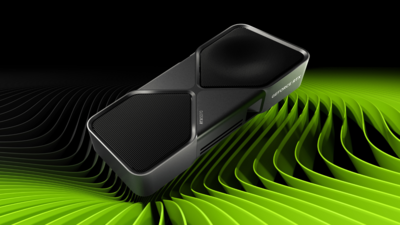Nvidia announced its next-generation RTX 50 series graphics cards at CES 2025. The highlight was the surprising announcement that the $549 RTX 5070 matches the performance of last year’s $1,999 RTX 4090 flagship GPU.
Powered by Nvidia’s Blackwell architecture, the new lineup consists of four models: RTX 5090 Rs 2,14,000 ($1,999), RTX 5080 Rs 1,07,000 ($999), RTX 5070 Ti Rs 80,000 ($749), RTX will be done. 5070 rupees 59,000 ($749). RTX 5090 and 5080 will be available in international markets on January 30th, and both versions of RTX 5070 will be available in February.
The flagship RTX 5090 features 32GB of next-generation GDDR7 memory and 21,760 CUDA cores, a significant upgrade over the previous generation. Despite the 575-watt power requirement, the card maintains a compact dual-slot design as opposed to the larger RTX 4090.
NVIDIA CEO Jensen Huang showcased the capabilities of the RTX 5090, demonstrating twice the performance of the previous RTX 4090 in Cyberpunk 2077 with ray tracing enabled. The flagship card achieved 238 fps compared to the RTX 4090’s 106 fps, which is mainly due to the new DLSS 4 technology.
Nvidia’s RTX 5080 features 16 GB of GDDR7 memory and 10,752 CUDA cores. The company claims it delivers twice the performance of the RTX 4080 while consuming 360 watts of power.
The RTX 5070 Ti and 5070 bring significant improvements to the midrange segment, with the Ti variant featuring 16GB of GDDR7 memory and 8,960 CUDA cores, while the standard 5070 comes with 12GB of GDDR7 and 6,144 CUDA cores. Contains a CUDA core. Jensen Huang promises the RTX 5070 will deliver “RTX 4090 performance,” but that claim seems to lean heavily on the performance benefits of DLSS 4, not just raw GPU performance. .
NVIDIA’s latest AI upscaling technology, DLSS 4, introduces multi-frame generation that can generate up to three additional frames for each rendered frame. This technology can increase frame rates up to 8x compared to traditional rendering.
All cards in the lineup support DisplayPort 2.1b, enable output up to 8K resolution at 165Hz, and are PCIe Gen 5 compatible. The new GPUs will be available through Nvidia’s Founders Edition design and partner manufacturers including ASUS, MSI, and GIGABYTE.
The laptop version of the RTX 50 series was launched in March and features the same architectural improvements as the desktop version. The mobile lineup includes variants of all four models, with the top-end RTX 5090 laptop GPU equipped with 24GB of GDDR7 memory.



